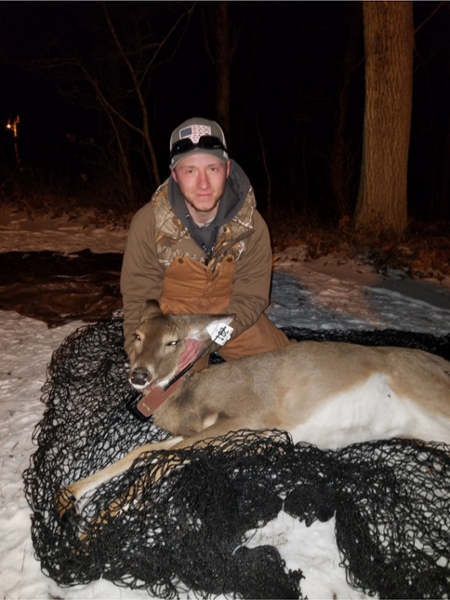Graduate Students
Main Content
Eric Canania

Email: eric.canania@siu.edu
Advisor: Drs. Clayton Nielsen and Eric Schauber
Research Interest
White-tailed deer (Odocoileus virginianus) are one of the most sought after big-game species in North America and are a major economic driver in terms of natural resource management in the state of Illinois. In recent years, deer management goals in Illinois have shifted from a primary emphasis on herd reduction to a mix of strategies, as individual county deer-vehicle collision rates have exceeded or dropped below target levels. Similarly, Illinois archery hunter surveys indicate that populations of coyotes (Canis latrans) and especially bobcats (Lynx rufus) continue to increase (Bluett 2013), potentially to the point where their impact on survival of older fawns and even adult deer may no longer be negligible in parts of the state. Since deer population growth is typically most sensitive to changes in survival of adult females (Chitwood et al. 2015; Eberhardt 2002), predation on older age classes could become substantial and thus impede efforts to meet county-level herd targets.
My studies will compare the age-specific impact of predation, as well as assessing spatial interactions between deer and their predators. To accomplish this, my team and I will capture and radio-collar ≥ 40 adult does/bucks, ≥ 50 neonate fawns, and ≥ 20 bobcats/coyotes, per year, between two study areas in east-central and southern Illinois. Collared deer will be monitored and mortality signals will be immediately investigated to determine cause of death based off of location, wound characteristics, degree of consumption, evidence of caching, etc. Space use patterns of deer and predators will be compared to test for avoidance by prey or directed hunting behavior by predators. In addition, we will use concurrent deer and predator locations to quantify age and sex-specific deer response to predator proximity. Results from such studies will help wildlife managers quantify and understand the effects of rising predator populations on deer productivity and behavior so they are more apt to manage future changes in deer abundance.



